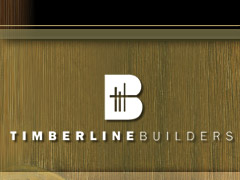We believe that being a “green” builder is the right thing to do for our homebuyers, as well as the environment. Our approach to building green is to use common sense, fundamentally sound and cost effective techniques and products researched for the southwest Colorado climate. We attempt to make the best possible use of technology, but don’t advocate an overly complicated home, because some technologies simply aren’t suited to every building budget, or buyer. These practices ensure that our homes are not only well built, but, are durable, have reduced maintenance and operating costs, and provide a healthy living environment to the owner.
The foundation of our green building philosophy is to create a home that is first and foremost energy efficient. We use a variety of tried and true energy efficient features that contribute to improved indoor air quality and homeowner comfort, lower energy use and reduced air pollution.
Some of the ways we make homes more energy efficient
| 1. |
Passive Solar
Proper site selection, building orientation and designing for passive solar heat is especially effective in our Southern Colorado climate. |
| |
|
| 2. |
Advanced Framing Techniques
Insulated door and window headers, 6” studs placed at 2’ on center, and raised truss heels all allow for increased insulation and help to minimize cold spots. |
| |
|
| 3. |
Effective Insulation
Properly installed and inspected insulation in floors, walls, attics and crawlspaces are the key to creating an energy efficient home. The use of advanced insulation materials with very high R values such as sprayed foam insulation and blown cellulose can also greatly improve a home’s efficiency. |
| |
|
| 4. |
High Performance Windows
Thermally insulated, low E windows with improved frames not only help keep heat in during the winter and out during the summer, but also block damaging ultraviolet sunlight that can fade furniture and carpets. |
| |
|
| 5. |
Tight Construction and Ducts
Sealing holes and cracks in the “building shell” and in heating and cooling duct systems helps reduce drafts, moisture, dust, pollen, and noise. |
| |
|
| 6. |
Efficient Heating and Cooling Equipment
Besides costing less to operate, an energy efficient heating and cooling system is quieter, will work less, and improve the overall comfort of the home. Tankless hot water heaters can save considerably on heating bills by not storing large amounts of heated water 24 hours a day. |
| |
|
Good indoor air quality is also an important consideration when building a home. With more people than ever suffering from asthma and allergies, we believe minimizing indoor pollutants is more important now than ever.
| 1. |
Low VOC Paints
Standard paints often contain Volatile Organic Compounds (VOCs) that can be unhealthy to breath and increase ground level ozone. We use low VOC paints whenever possible. |
| |
|
| 2. |
Carpet
To reduce dust, pollen, and other irritants, the use of carpet should be kept to a minimum. If used, we specify certified non-offgassing carpet and pad. |
| |
|
| 3. |
Heat Recovery Ventilation Systems
The most effective way to ensure good indoor air quality is to install a heat recovery ventilation system. This system draws “bad” air from places like the kitchen, baths and laundry, and then introduces tempered, fresh air from outdoors to places like the living room and bedrooms. |
| |
|
The third major component of our green building program is to consider resource management and sustainable building practices.
| 1. |
Engineered Wood and Decking
Engineered wood utilizes recycled lumber to produce structural wood members that are lighter, stronger and straighter than conventional sawn lumber. The use of recycled sawdust and plastic to produce decking materials such as Trex has become commonplace in the industry and is well suited to our climate. |
| |
|
| 2. |
Water Conservation
The use of low volume toilets, showers and faucets can save a household thousands of gallons of water a year. We endorse the use of these water saving devices and appliances, as well as recommend water-wise landscaping strategies. |
| |
|
| 3. |
Recycling
We use recycling containers on all of our construction projects. Lumber scraps are shredded and used as mulch. Gypsum board (drywall) is also shredded and used to fortify soil. Metal, plastic and cardboard are recycled. |
| |
|
| |
|
| As a basis to provide a measurable standard that we can use to gauge and monitor our performance, we are members of Built Green Colorado. Introduced in 1995, Built Green Colorado is one of the oldest and largest green building certification programs in the country. Affiliation with this program provides us with technical support and training in products and best practices proven effective in Colorado. |
| |
|
Timberline Builders is proud to have been elected to the Built Green Colorado Hall of Fame in 2005, and named the Phoenix Recycling, Outstanding Recycler or the Year in 2007.
|

